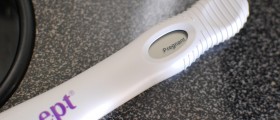
Researched published in the journal Environmental Health Perspectives indicates that couples who are trying to conceive could be 30 percent less likely to succeed because of exposure to pollutants like pesticides and industrial compounds. The study was conducted by a group of researchers from the National Institutes of Health, and followed 500 couples who were attempting to get pregnant either for a year, or until they conceived. The participating couples were tested for 63 different organic pollutants, including chemicals such as polychlorinated binphenyls (PCBs) that were banned a long time ago but are still present in the environment and ingested with our food sometimes. Those couples who took part in the study were given a kit to help them to determine ovulation, and they wrote information about their lifestyle and diet down in a journal. Those couples who had higher blood concentrations of any of 12 of the analyzed pollutants had a significantly reduced chance of getting pregnant. Depending on the individual pollutant, the odds of conceiving were reduced by anywhere from 17 percent to 29 percent. One very interesting discovery was that men who were exposed to pollutants were much more likely than women to see a reduction in their fertility.
The research team points out that this discovery may revolutionize male fertility testing we now know that there is more to male fertility than sperm count, sperm shape and speed, and pollutant levels should probably tested routinely in the future. The other interesting but shocking finding is that we continue to be affected every day by pollutants that were banned decades ago. The question is, how can we avoid having these chemicals in our blood stream? Well, a lot of equipment produced before 1979 contains PBs. They are mostly found in electrical transformers and capacitators, heat transfer systems, but also in industrial equipment and medical equipment. If you have a lot of old equipment in your home, or use it at work, consider replacing the equipment or otherwise getting away from it.

















Your thoughts on this
Loading...